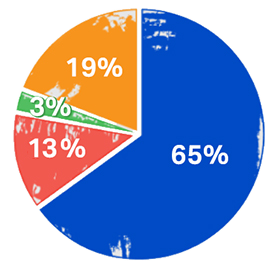Need Help?
We estimate that Sustainable Aviation Fuel (SAF) could contribute around 65% of the reduction in emissions needed by aviation to reach net zero CO2 emissions by 2050. This will require a massive increase in production in order to meet demand. The largest acceleration is expected in the 2030s as policy support becomes global, SAF becomes competitive with fossil kerosene, and credible offsets become scarcer.
Government policy has an instrumental role to play in the deployment of SAF. IATA encourages policies which are harmonized across countries and industries, while being technology and feedstock agnostic. Incentives should be used to accelerate SAF deployment. As SAF is in the early stages of market development, mandates should only be used if they are part of a broader strategy to increase the production of SAF and complemented with incentive programs that facilitate innovation, scale-up and unit cost reduction.
> Read more on our SAF policy approach (pdf)
Our strategy towards net zero CO2 emissions
Achieving net zero CO2 emissions by 2050 will require a combination of maximum elimination of emissions at the source, offsetting and carbon capture technologies.
 |
|
What is SAF?
SAF is a liquid fuel currently used in commercial aviation which reduces CO2 emissions by up to 80%. It can be produced from a number of sources (feedstock) including waste oil and fats, green and municipal waste and non-food crops.
It can also be produced synthetically via a process that captures carbon directly from the air. It is ‘sustainable’ because the raw feedstock does not compete with food crops or water supplies, or is responsible for forest degradation. Whereas fossil fuels add to the overall level of CO2 by emitting carbon that had been previously locked away, SAF recycles the CO2 which has been absorbed by the biomass used in the feedstock during the course of its life.
Seven biofuel production pathways are certified to produce SAF, which perform at operationally equivalent levels to Jet A1 fuel. By design, these SAFs are drop-in solutions, which can be directly blended into existing fuel infrastructure at airports and are fully compatible with modern aircraft.
> SAF Factsheet (pdf)
Need Help?
Our vision
- Support the aviation industry long-term climate goal
- Increase the commercial deployment of SAF
Our focus
- Engage with a wide range of industry and policy stakeholders on all SAF topics and facilitate cooperation and promote partnerships between them
- Provide policy support at national, regional (e.g. EU) and international (UN) level to create the necessary framework for the commercialization of SAF
- Work towards removing barriers to the realization of a cost-competitive SAF market
- Promote the global harmonization of sustainability criteria for SAF
- Educate and support producers on the technical certification process (i.e ASTM D1655 certification)
- Establish forums for knowledge exchange and business networking opportunities for suppliers and consumers of SAF (e.g. Sustainable Aviation Fuel Symposium)
SAF Documentation
|
Do you want to learn more? Attend one of our training courses, online or classroom
- Aviation and the Environment
- Carbon Markets and Sustainable Aviation Fuels
- Fuel Efficiency and Conservation
We also offer tailored workshops and consulting services to help industry and government stakeholders use SAF to its full potential.